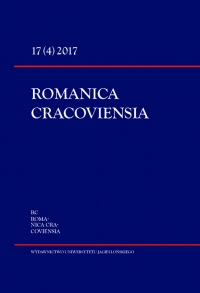LES MODALITÉS DE LA DESCRIPTION DE LA RÉALITÉ CONNUE DANS LE DEVISEMENT DU MONDE DE MARCO POLO
THE WAYS OF DESCRIBING ALREADY KNOWN REALITY IN THE DESCRIPTION OF THE WORLD BY MARCO POLO
Author(s): Alicja BańczykSubject(s): Cultural history, Other Language Literature, 13th to 14th Centuries, Theory of Literature
Published by: Wydawnictwo Uniwersytetu Jagiellońskiego
Keywords: travel; Marco Polo; ways of describing; travel books; Middle Ages;
Summary/Abstract: The aim of this paper is to analyse the problem of intertextuality in Marco Polo’s work – the Description of the World. It is undeniable that when having travelled to the East, Marco Polo had already known a lot of legends and texts dating from the Antiquity and they had influenced his expectations towards the East. Being far from his home Venice he tried to find things he already knew in unknown reality and then he tried to insert them into his work. The paper firstly analyses how the legend of Alexander the Great influenced the image of this king presented in The Description of the World. This paper also confirms that Marco Polo was highly influenced by Christian legends, trying to find the grave of St. Thomas the Apostle and the kingdoms of legendary Christian kings of the East: John and David. Moreover the author of The Description of the World tried to find some fantastic beasts like unicorns or griffins. The article also analyses how Marco Polo entered in debate with travel stories from his own times: the one of Giovanni Piano Carpini and the one of Guillaume Rubrouck. Those analyses lead to conclusion that Marco Polo wanted to insert in his work the contents well-known in Europe in order to satisfy the expectations of his readers. Though at the same time he did not hesitate to change and to demystify some of them.
Journal: Romanica Cracoviensia
- Issue Year: 17/2017
- Issue No: 4
- Page Range: 209-221
- Page Count: 13
- Language: French

